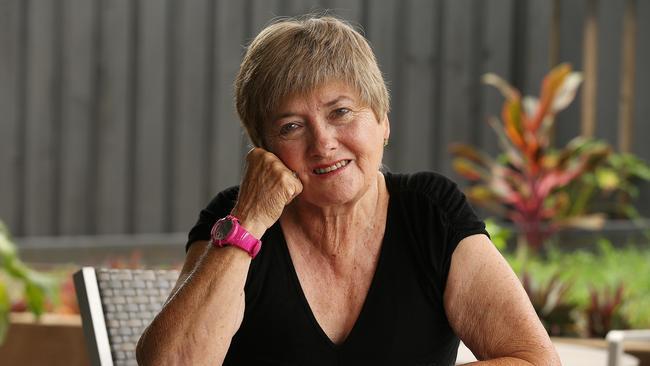Crew of missing WWII Catalina can rest at last
The crash site of a missing Catalina flying boat carrying nine WWII aircrew has been found.

The crash site of a Catalina flying boat carrying nine Australian aircrew that went missing on a World War II bombing raid more than 74 years ago has been found in The Philippines.
Air force officers have begun contacting the next of kin of the nine airmen to alert them to the discovery of wreckage from the Catalina A24-64, known as the Dabster, which vanished without a trace on December 14, 1944.
An official expedition to the site earlier this year using metal detectors discovered distinctive wreckage from the Catalina, including parts associated with the small stove that was issued to the aircraft for long haul flights, as well as a piece of window frame and other parts.
Following extensive forensic examination of the parts and confirmation of their association with the Catalina, RAAF officers began contacting families.
The Australian last year revealed the RAAF’s intention to mount the expedition following reports of an officer’s cap badge being found at the site, but experts were divided over which plane might have crashed on the hillside. One theory was that a Liberator bomber returning from a secret mission with Australian special forces to Borneo had hit the hillside but another hypothesis pointed to the Catalina.
Both planes were lost without a trace during missions in the region and extensive searches had failed to find any clue to their fate.

While some relatives knew there was an expedition, they had received no definite indication as to which aircraft if any would be at the site until last week.
For Anne Lefebvre, who was seven months old when her navigator father Flight Lieutenant James Cox went missing on the Dabster, the call left her stunned.
“When they told me they had found my father’s plane, I thought it was a scam,’’ said 74-year-old Ms Lefebvre. “I nearly fell off my chair. I was in shock.”
Ms Lefebvre said even as a young child, she had desperately tried to find out what happened to her father.
“I lived in Canberra and even when I was young I used to take my friends up to the war memorial and look for my father,’’ she said.
“One day, I must have been about seven or eight, I climbed up into an aircraft they had there to look inside to see if I could find my father.
“The guards came and got me down. I told them I was trying to find him.”
Ms Lefebvre said she also received a personal briefing from the air force last week that included being shown some of the material they recovered from the site.
She said as well as being shown the coils from the stove and a part from a window that could only be used on the Catalina, the officers also had drone footage of the site that suggested an impact on the hillside.

Defence is understood to be planning an expedition in 2020 to the site to conduct an in-depth search and check to see if any human remains are at the site.
However, Ms Lefebvre said she had the impression from the briefing that it was unlikely any human remains would be found given the weather conditions and the length of time that had passed since the crash.
Of the nine crew on the plane, five were from NSW, two from West Australia and two from Victoria.
For the families of the men, the hardest thing was having no clue as to what happened to the Dabster, which was supposed to be returning from a night mine-laying operation on Manila Bay.
Some of the next of kin spent years seeking answers and keeping the missing men’s memories alive.
One parent, Stanley Goodchild, whose son Crew Sergeant Harold Goodchild was on the plane, left a lasting monument to his son.
He constructed a large brick gateway to the entrance to his wheat farm in Mukinbudin in Western Australia and installed electric lights to act as a beacon in the remote bush to guide his missing son home.
Ms Lefebvre said her mother, despite remarrying, never gave up believing that her father was going to come back.
“Even when she died, I still think she had hope he was still alive,’’ she said.
“It would be tears for weeks before Anzac Day.
“When my mother went out, I would get a suitcase of photographs sent back by my father and go through them, as he was an amateur photographer.”
Also missing on the Dabster were flight lieutenants Herbert Cunningham Roberts and Frank William Silvester; flying officers Robert Carlisle Barbour and Raymond Harold Bradstreet; and sergeants James Robert Robinson, David John Albert, and John Charles MacDonald.
The Dabster’s night mission had been to mine the Balabac Strait and the mouth of Manila Bay in a bid to stop the Japanese from attacking an allied landing on Mindoro the following day.
Twenty-four Catalinas — dubbed the Black Cats — took part in the mission, which involved a four-hour flight to the harbour and a night attack.



To join the conversation, please log in. Don't have an account? Register
Join the conversation, you are commenting as Logout